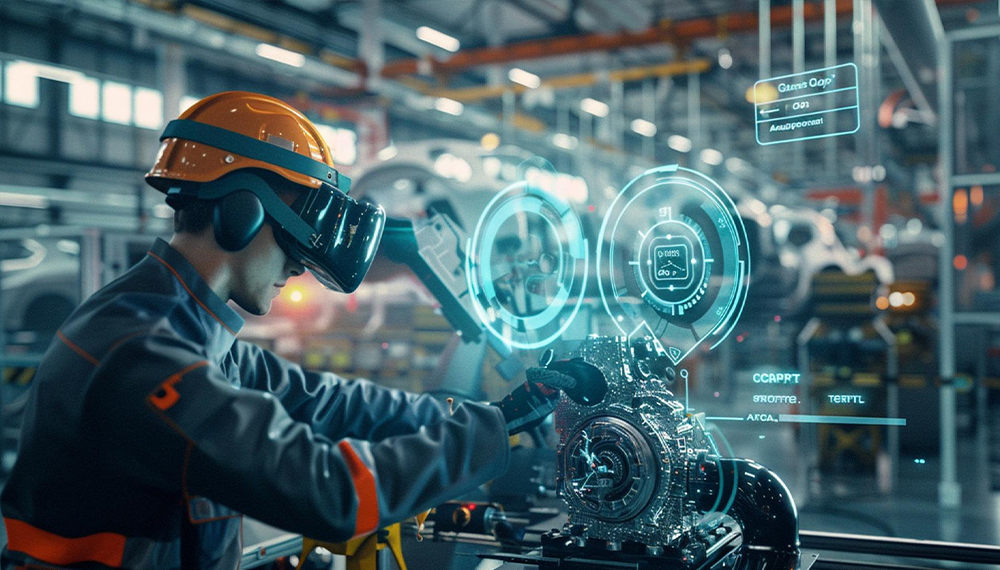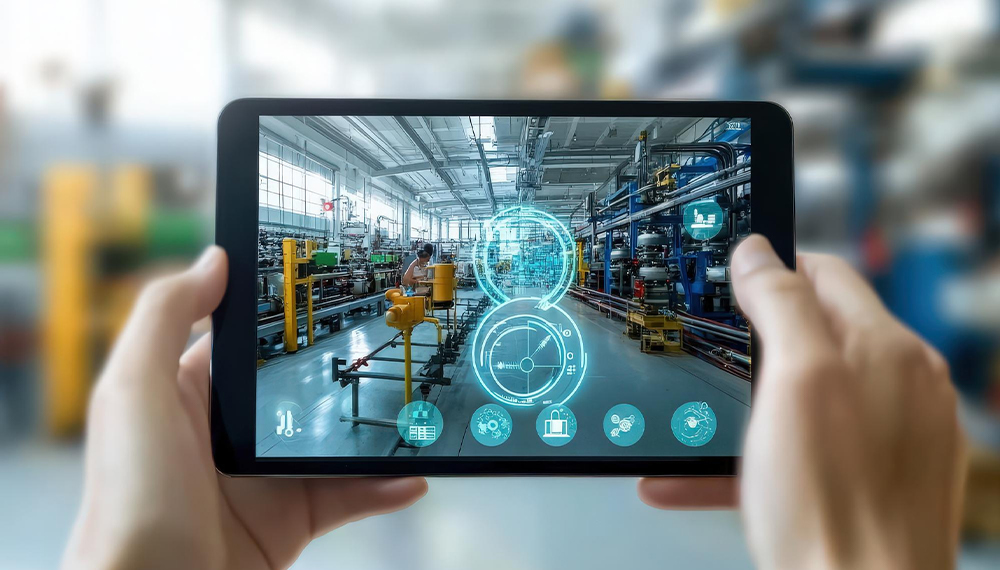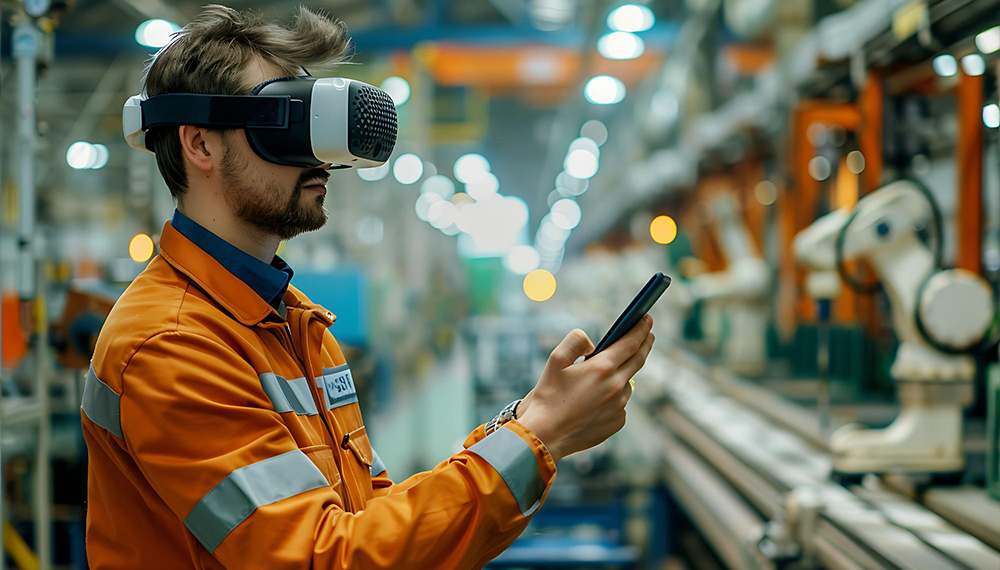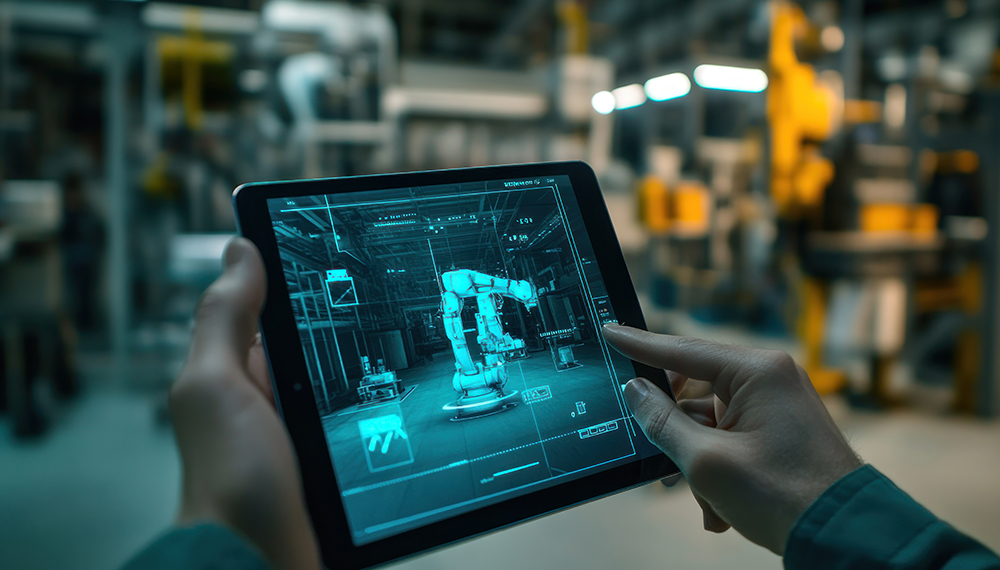Factories are no longer the noisy, chaotic places they once were. Today, they are becoming smarter, safer, and faster. At the heart of this transformation are AR apps for factory management in India—a new wave of digital tools that combine augmented reality with real-time data. These apps are not just about showing fancy visuals on a screen. They are silent powerhouses reshaping the way managers, engineers, and workers run operations.
Why AR Is Entering the Factory Floor
India’s manufacturing sector is growing at record speed, driven by “Make in India” initiatives and rising demand from global markets. But with growth comes new challenges—downtime, safety risks, skill gaps, and compliance checks.
This is where AR apps for factory management in India step in. They bring live machine data, sensor updates, and even safety alerts into the worker’s line of sight. Instead of flipping through manuals or waiting for supervisors, workers can now point their mobile device at a machine and instantly see its health, status, and what action to take next.
Smart Strategies Factories Don’t Talk About
While the tech looks simple on the surface, the strategies behind it are where the real magic happens.
Predictive Maintenance Without Guesswork
Factories quietly use AR apps for factory management in India to cut down on unplanned breakdowns. The strategy is simple—connect IoT sensors to machines, feed the data into the app, and let AR highlight issues before they become serious. What looks like a quick alert on a screen is actually a big money saver in the background.
Safety as a Visual Experience
Compliance manuals can be hard to follow on paper. But when hazard zones, SOPs, and warnings appear as AR overlays directly on the factory floor, workers pay attention. Some plants use this strategy to reduce accidents and train new staff faster. By turning safety into a real-time experience, AR apps for factory management in India are rewriting workplace culture.
Training Without Training Rooms
Instead of sending employees to classrooms, factories are quietly embedding learning into daily work. AR overlays show step-by-step guidance while workers handle machines, making on-the-job training effortless. Many companies never advertise this strategy, but it’s becoming a secret weapon to upskill teams without slowing production.
The Trends Driving Adoption
The rise of AR apps for factory management in India is not just about technology. Several larger trends are pushing adoption forward:
- Industry 4.0 Push: Indian factories are under pressure to digitalize, and AR provides a quick, practical entry point.
- Workforce Shortages: With skilled labor in short supply, AR helps bridge the gap by guiding less experienced staff in real time.
- Global Standards: Export-driven manufacturers are adopting AR to meet strict safety and compliance expectations.
- Remote Oversight: Managers can monitor processes from anywhere, reducing the need for physical supervision.
How Factories Use AR Without Saying So
Interestingly, many brands don’t openly promote their use of AR. It’s treated like a hidden advantage. Here are a few ways they use it silently:
Hidden Strategy 1: Instant Troubleshooting
Instead of calling senior engineers to every machine issue, frontline workers use AR overlays to troubleshoot. This keeps downtime invisible to outsiders but significantly boosts efficiency.
Hidden Strategy 2: Faster Audits
Auditors walk into factories expecting long checklists and manual records. But with AR-enabled monitoring, managers can present live data instantly. It’s a quiet tactic to impress clients and partners.
Hidden Strategy 3: Layered Data Insights
Factories feed IoT data into AR apps, not only for frontline workers but also for decision-makers. Managers can track vibration, torque, pressure, and more, building long-term insights without ever exposing the method to competitors.
The Real-World Impact
So what does all this mean for factories in practice?
- Reduced Downtime: By catching issues early, AR apps save hours of lost production.
- Enhanced Safety: Hazard zones, warnings, and compliance visuals keep accidents at bay.
- Better ROI: The cost of deploying AR is often smaller than the savings from preventing breakdowns.
- Future-Ready Workforce: Even younger or less experienced employees become effective quickly with AR-guided work.
This is why more plants across India—from automotive to pharmaceuticals—are adopting AR apps for factory management in India.
Looking Ahead: Where AR and IoT Meet
The future lies not just in AR, but in its marriage with IoT. When real-time sensor data meets augmented reality overlays, factories move into an entirely new era of intelligence. Imagine a world where a worker sees live energy consumption while operating a machine or where predictive alerts float on a screen before a breakdown even happens.
This vision is not years away—it’s already happening. And AR apps for factory management in India are leading the way.
Closing Thoughts: Why This Matters Now
Factories are not just about machines anymore. They are about data, safety, and people working smarter. The hidden strategies—predictive maintenance, immersive safety, real-time training—are shaping India’s new industrial backbone. And while many companies stay quiet about how they use them, the results are impossible to ignore.
For manufacturers, the time to act is now. If you are exploring how to make your factory future-ready, AR apps for factory management in India are no longer an option—they are the edge you need to stay ahead.
And for those seeking proven expertise, there are innovators already delivering solutions that combine IoT data with AR overlays, helping factories reduce downtime, boost safety, and prepare for the digital future.
FAQs on AR Apps for Factory Management in India
Q1. What are AR apps for factory management in India used for?
They are used to monitor machines, track safety compliance, reduce downtime, and guide workers through tasks with real-time AR overlays connected to IoT data.
Q2. How do AR apps improve factory safety?
They visually display hazard zones, SOPs, and alerts directly on equipment, making it easier for workers to spot dangers and follow safety protocols instantly.
Q3. Can AR apps reduce factory downtime?
Yes. By using predictive maintenance strategies, AR apps highlight machine issues early, preventing breakdowns and saving hours of production time.
Q4. Are AR apps for factory management in India expensive to implement?
While there is an initial investment, the long-term savings from reduced downtime, fewer accidents, and better training often outweigh the cost.
Q5. What industries benefit the most from AR apps?
Automotive, pharmaceuticals, electronics, and heavy manufacturing industries are among the biggest adopters, though any factory dealing with machinery can benefit.




